Cutco knives are renowned for their high-quality, American-made craftsmanship and durable steel blades, making them a favored choice among professional chefs and home cooks alike. These knives are designed to deliver precision cuts, but like any valuable tool, they require regular maintenance to perform at their best. Regular sharpening ensures that Cutco knives retain their sharpness and effectiveness, preventing unnecessary strain during use and prolonging their lifespan.
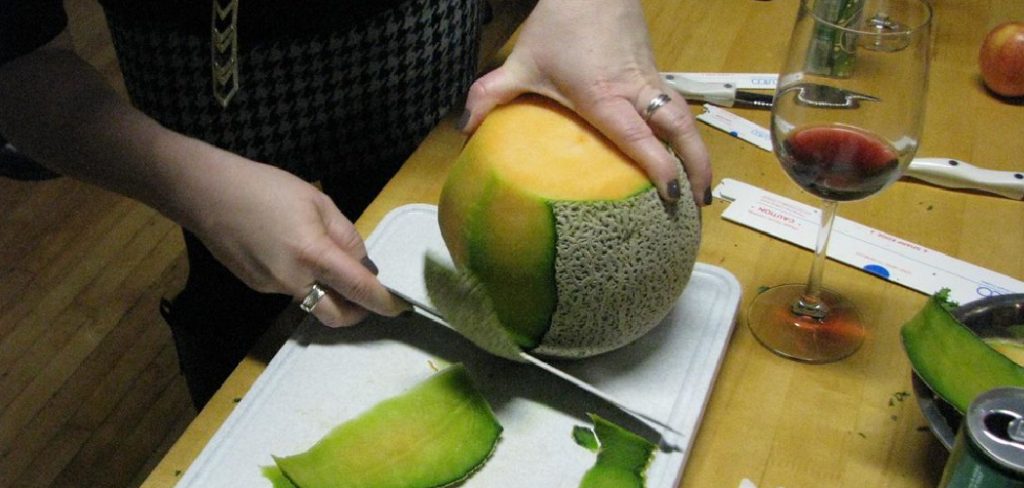
The purpose of this article is to guide you through the process of how to sharpen a Cutco knife effectively. By following the outlined steps, you will be able to keep your knives cutting like new, enhancing their performance in everyday kitchen tasks. Whether you are a seasoned chef or an enthusiastic home cook, understanding the importance of proper knife sharpening is crucial for optimal kitchen results.
Understanding Cutco Knives
Cutco’s Blade Design and Materials
Cutco knives are crafted from high-carbon stainless steel, which ensures longevity and enhances resistance to staining and corrosion. This material choice allows the blades to maintain their sharpness for extended periods with proper maintenance. The high carbon content contributes to the hardness of the steel, making it durable and capable of delivering precise cuts consistently. It’s crucial to sustain the edge of these knives through regular care to optimize performance, reduce cutting effort, and extend the knife’s lifecycle. Proper maintenance involves not only addressing the sharpness but also preserving the structural integrity of the blade’s edge.
The Cutco Edge
One of the defining features of Cutco knives is their unique Double-D edge, a serrated design that distinguishes them from traditional straight-edged blades. This edge allows for both slicing and sawing motions, making it versatile for various cutting tasks. Sharpening this distinctive edge requires specific techniques to preserve the integrity of its pattern. Unlike straight edges, the Double-D edge doesn’t need frequent honing but benefits from professional sharpening to ensure each serration maintains its cutting efficacy. Maintaining the integrity of this design is essential to prevent dulling and to keep the knife performing effectively over time.
Tools Needed for Sharpening Cutco Knives
Cutco Sharpening Tools
Cutco offers its own range of sharpening tools designed specifically to maintain the integrity of its blades, including the popular hand-held sharpening tool and the professional knife sharpener. These tools are engineered to work seamlessly with the unique Double-D edge of Cutco knives, helping maintain their sharpness without compromising the blade’s pattern. Using Cutco’s proprietary tools ensures that the hardness and edge design of the blade are preserved, effectively extending the knife’s lifespan. The precision and reliability of Cutco sharpeners are tailored to suit both seasoned chefs and home cooks, offering convenience and confidence in their sharpening process.
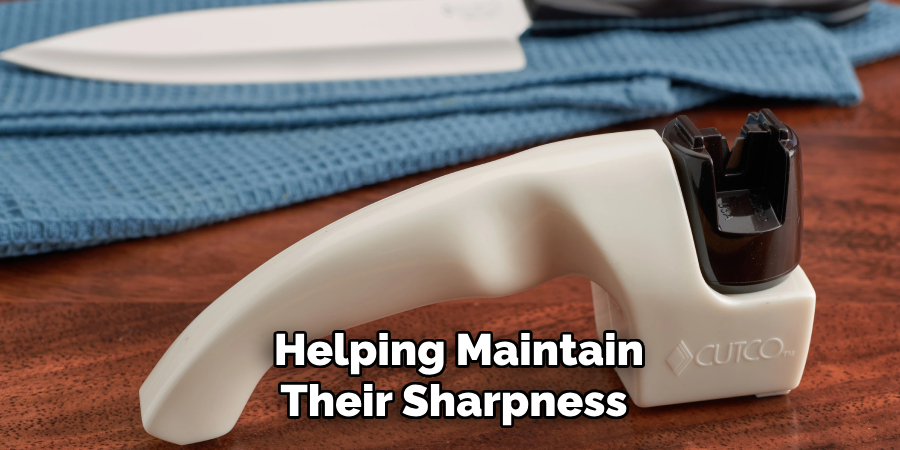
Alternative Sharpening Tools
Beyond Cutco’s own tools, other sharpening options include sharpening stones, ceramic rods, and electric sharpeners. Sharpening stones are versatile and allow for controlled sharpening, while ceramic rods are excellent for honing the edge gently. Electric sharpeners provide quick results and are particularly useful for those looking for efficiency. When selecting an alternative tool, consider your personal preference, the specific model of your Cutco knife, and its current condition. Each tool offers different benefits, and choosing the right one can make a difference in preserving the functionality and sharpness of your knives.
Preparing to Sharpen Your Cutco Knife
Safety Measures
When preparing to sharpen your Cutco knife, it is essential to prioritize safety to prevent accidents. Begin by ensuring you have a stable, non-slip surface to work on, which will provide a secure foundation for the sharpening process. Keep your fingers clear of the blade at all times to reduce the risk of injury. Consider wearing protective gloves, which serve as an additional safety measure, particularly when handling sharp edges. Gloves made of cut-resistant materials can offer peace of mind and help you focus on the sharpening task without fear of cuts.
Cleaning the Knife
Proper cleaning is a crucial step before you start sharpening your Cutco knife. Begin by thoroughly washing the blade with warm water and mild soap to remove any food particles, oils, or residue that may have accumulated during use. This cleaning process ensures that no debris interferes with the sharpening, allowing for a more effective outcome. Once cleaned, it is important to dry the knife completely using a soft, clean towel, as moisture can promote rusting during the sharpening process. A well-maintained, clean surface not only aids in achieving a sharp edge but also contributes to the longevity of your knife.
How to Sharpen a Cutco Knife: Step-by-Step Guide
Using a Cutco Handheld Sharpener
The Cutco Handheld Sharpener is engineered to maintain the unique Double-D edge of your Cutco knives. To begin sharpening, ensure that your knife and sharpener are clean and dry. Hold the sharpener firmly in one hand while securing the knife in the other. It’s vital to maintain a steady angle, typically 20 degrees, as you guide the knife through the sharpener. Start at the base of the blade and draw it through the sharpener in a smooth, continuous motion towards the tip.
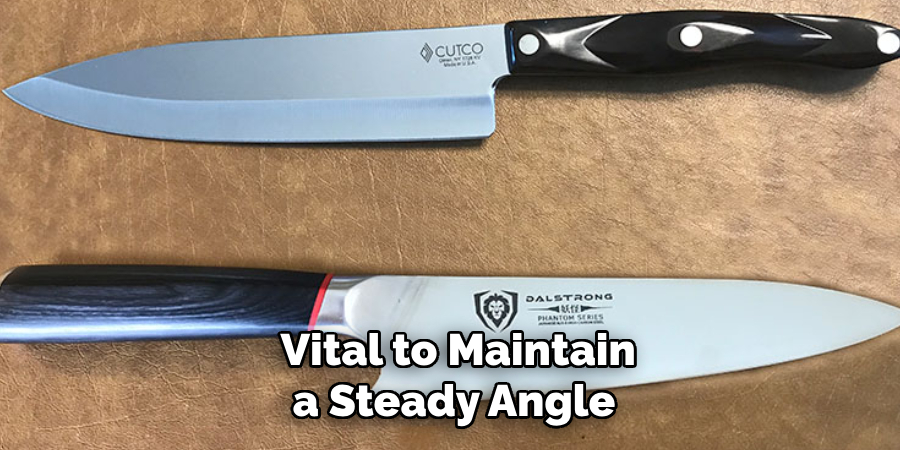
Apply gentle, even pressure to avoid over-sharpening or damaging the blade. Repeat this process a few times, ensuring that the blade remains in contact with the sharpener. Your knife will regain its sharp edge with patience and care, ready for precise slicing and dicing.
Using a Sharpening Stone
To sharpen a Cutco knife with a sharpening stone, first decide whether to use water or oil as a lubricant. This will help reduce friction and prevent metal filings from clogging the stone. Hold the knife at a consistent 20-degree angle against the stone. Begin with the coarse side if the blade is very dull, or directly with the fine side for regular maintenance. Stroke the blade across the stone, moving from the base to the tip, alternating sides to ensure an even edge. This technique hones both sides evenly and restores the knife’s sharpness effectively.
Using a Ceramic Rod
Ceramic honing rods are excellent for realigning a Cutco knife’s edge and removing any small nicks before sharpening. Hold the rod vertically with its tip on a flat, stable surface. Grasp the knife with the other hand, positioning the blade at a 20-degree angle against the rod. Gently draw the blade down and across the rod, starting at the base and moving toward the tip. Alternate strokes on each blade side ensure even attention to both edges. Regular honing with the ceramic rod is pivotal in maintaining the knife’s peak sharpness between sharpening sessions, prolonging the blade’s cutting efficiency.
Testing the Sharpness of a Cutco Knife
Visual Inspection
After sharpening, visually inspecting the edge of your Cutco knife is a crucial step to ensure the effectiveness of the sharpening process. Examine the blade under good lighting to look for any visible nicks, dull spots, or inconsistencies along the edge. Pay close attention to the Double-D serration pattern, verifying that its integrity remains intact and smoothly transitions along the blade. A properly sharpened knife will have an even and precise edge without any irregularities that could affect performance.
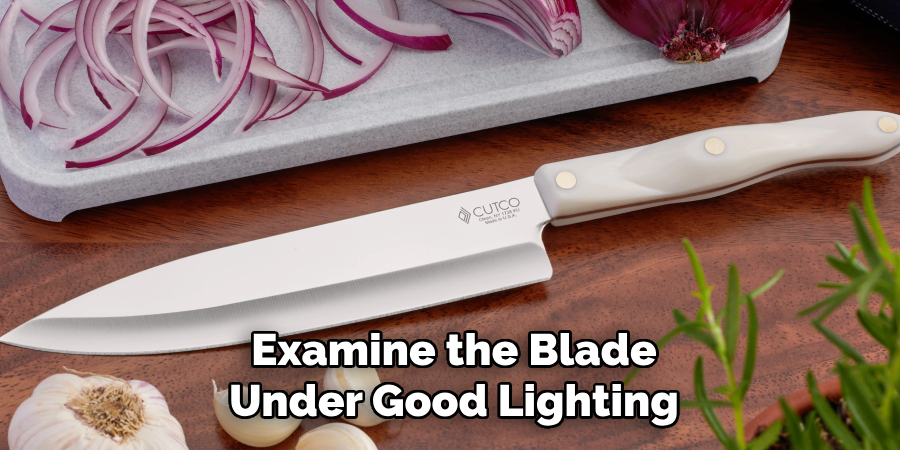
Physical Test
To physically test your Cutco knife’s sharpness, start by gently slicing through soft materials like paper or a ripe tomato. The knife should glide easily without exerting much force, indicating its keen edge. Test the blade by cutting through meat or vegetables for a more functional assessment. The knife should slice effortlessly and precisely, demonstrating that it can handle various kitchen tasks with ease and proficiency.
Maintaining the Sharpness of Your Cutco Knife
Regular Honing
Regular honing of your Cutco knife with a ceramic rod is crucial for maintaining its edge between sharpening sessions. Honing realigns the microscopic teeth on the blade’s edge, which can bend and dull over time with regular use. By keeping the edge straight, your knife can perform at its best for daily tasks without frequent sharpening. Incorporating this practice into your routine prolongs the intervals between sharpenings and ensures that your knife maintains its cutting precision for every meal preparation.
Proper Storage
Proper storage of your Cutco knives is essential to prevent damage and preserve their sharpness. To avoid dulling the edge over time, it is best to store the knives in a way that minimizes contact with other objects. Utilize a knife block, magnetic strip, or protective sheath to safely keep your knives. These storage solutions provide each knife with its own space, reducing the risk of nicking or dulling the blades. By taking these precautions, you contribute significantly to the longevity and effectiveness of your Cutco knives, ensuring they remain reliable tools in your kitchen arsenal.
Common Mistakes to Avoid When Sharpening a Cutco Knife
Sharpening Too Often
Over-sharpening your Cutco knife can be detrimental, as it unnecessarily removes metal from the blade, reducing lifespan and potential damage. It’s best to hone the blade instead of sharpening it for routine upkeep, as honing maintains the edge without altering the blade’s shape or structure.
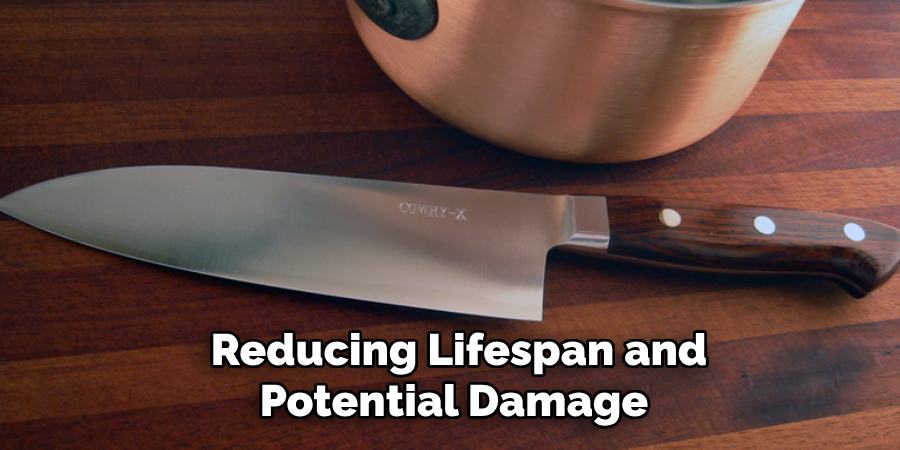
Incorrect Angles or Excessive Pressure
Using the correct angle, typically 20 degrees, is crucial for effective sharpening. Additionally, applying excessive pressure can distort the blade or wear it down prematurely. Maintaining a steady hand and gentle touch will preserve the knife’s edge, ensuring it remains sharp and efficient for longer.
Conclusion
To ensure your Cutco knife remains in top condition, it’s essential to understand how to sharpen a Cutco knife correctly and maintain it regularly. Use the right tools, such as handheld sharpeners, sharpening stones, or ceramic rods, maintaining a consistent 20-degree angle. Regular honing realigns the knife’s edge and prevents frequent sharpening, thereby extending its lifespan. Proper storage also plays a crucial role in preserving the blade’s sharpness. By following these practices and embracing these techniques, you can sustain the unique Double-D edge and achieve peak performance in your kitchen endeavors for years to come.
Edmund Sumlin is a skilled author for Metal Fixes, bringing 6 years of expertise in crafting a wide range of metal fixtures. With a strong background in metalwork, Edmund’s knowledge spans various types of fixtures, from decorative pieces to functional hardware, blending precision with creativity. His passion for metalworking and design has made him a trusted resource in the industry.
Professional Focus:
- Expert in Metal Fixtures : Edmund aesthetic specializes in creating durable and innovative metal fixtures, offering both appeal and functionality. His work reflects a deep understanding of metalworking techniques and materials.
- Sustainability Advocate : He is dedicated to using sustainable practices, ensuring that every fixture is crafted with eco-friendly methods while maintaining high-quality standards.
In his writing for Metal Fixes, Edmund provides valuable insights into the latest trends, techniques, and practical advice for those passionate about metal fixtures, whether they are professionals or DIY enthusiasts. His focus on combining artistry with engineering helps others discover the true potential of metal in design.


